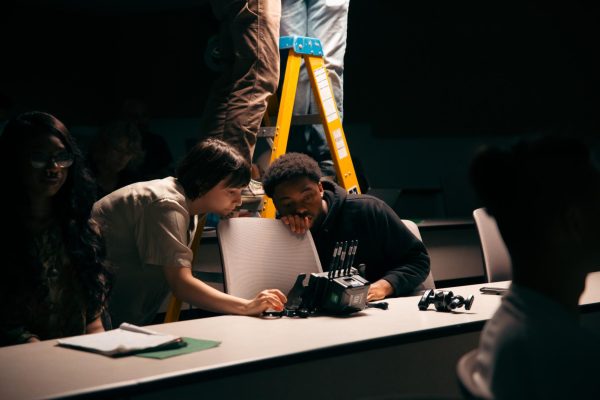Many state issues fail
November 9, 2005
Four state issues that would have changed election processes were overwhelmingly voted down yesterday with negative votes getting more than 60 percent, according to unofficial state results.
The issues, two through five on the ballot, would have affected absentee ballots, voting districts, donations to candidates and supervision of elections.
“They’re pretty bad,” said Keary McCarthy, press secretary for Reform Ohio Now, an organization supporting these issues. “They’re not as close as I thought they might be.”
The opposition had expected a rejection from Ohio voters, said David Hopcraft, spokesman for Ohio First Voter Education Fund, a ballot committee opposing issues two through five.
“I don’t think that we would have predicted such a broad voter rejection of these ideas, but we thought voters would reject them,” he said. “It just shows the Ohio voters prize their votes and aren’t willing to give them up to out-of-state special interest groups.”
Ohio First members said the issues were being pushed by groups in California, New York and Washington D. C. who were unhappy with the results of the last presidential election, Hopcraft said.
This election was an uphill battle because of the complex nature of the issues at hand, McCarthy said.
“I don’t think these are ‘no’ votes,” he said. “These are ‘I don’t know’ votes. We had some complicated issues on the ballot.”
Issue 2:
Issue 2 would have allowed voters to cast absentee ballots for 35 days before the election without reason.
Hopcraft said the state already has strong absentee voting rights, and this issue lacked safeguards against voting frauds.
“What good is your ballot if you vote early and it’s only overtaken by fraudulent voters?” Hopcraft asked.
McCarthy said Issue 2 would have strengthened voter participation, but legislators already passed an amendment allowing for early voting last month, so this issue was not a complete failure.
“Right now, America has one of the least participating democratic systems in the world,” McCarthy said. “We want to do everything we can to increase voter participation.”
Issue 3:
Issue 3 would have placed limits on the amount of money organizations and individuals can give to political candidates.
“It creates loopholes for special interest groups,” Hopcraft said. “Small donor PACs can give up to 20 times as much as an individual.”
According to ballot language, individuals could give $2,000 to statewide candidates, while small donor political action committees could donate up to $20,000.
Supporters of the bill, such as Reform Ohio Now, wanted money removed from the political equation. Ohio has some of the highest contribution limits in the country, McCarthy said.
“We want to take money out of politics because we feel it’s one of the most corrosive and corruptive factors to what we’ve seen coming out of Columbus,” McCarthy said.
The passage of Issue 3 would have also made it harder for some candidates to run for office, Hopcraft said. Millionaire candidates, such as Jerry Springer, could spend their own funds on their campaigns as they want.
Issue 4:
Issue 4 would have appointed a commission to draw voting districts, trying to make them more competitive.
Districts are redrawn every 10 years by government officials.
“The current system allows politicians to pick their voters, rather than letting voters pick their politicians,” McCarthy said.
Competitive voting districts would give voters more power, he said. However, Columbus has recognized the unconstitutionality of the redistricting process and the state will start examining the current system.
Ohio First argued the opposite point. Hopcraft said appointed officials do not represent regional groups, and this issue would have actually removed power from the people by not allowing them to vote for the district-makers.
Issue 5:
Issue 5 would have removed the Secretary of State as overseer of elections and appointed a board of nine members serving staggered nine-year terms. Four members would have been chosen by the governor and four by the opposing party. The ninth member would have been a non-partisan member appointed by the Ohio Supreme Court.
Proponents of the issue feel a committee would be more likely to make unbiased decisions, McCarthy said.
Opponents such as Ohio First said this issue would have also taken power away from voters like Issue 4.
“We do not know of one government in the world that has been improved by removing voters from it,” Hopcraft said.
Currently, voters elect the Secretary of State, who runs Ohio’s elections. An appointed committee would have unlimited power with no obligations to the voters, he said.
Contact administration reporter Rachel Abbey at [email protected].























